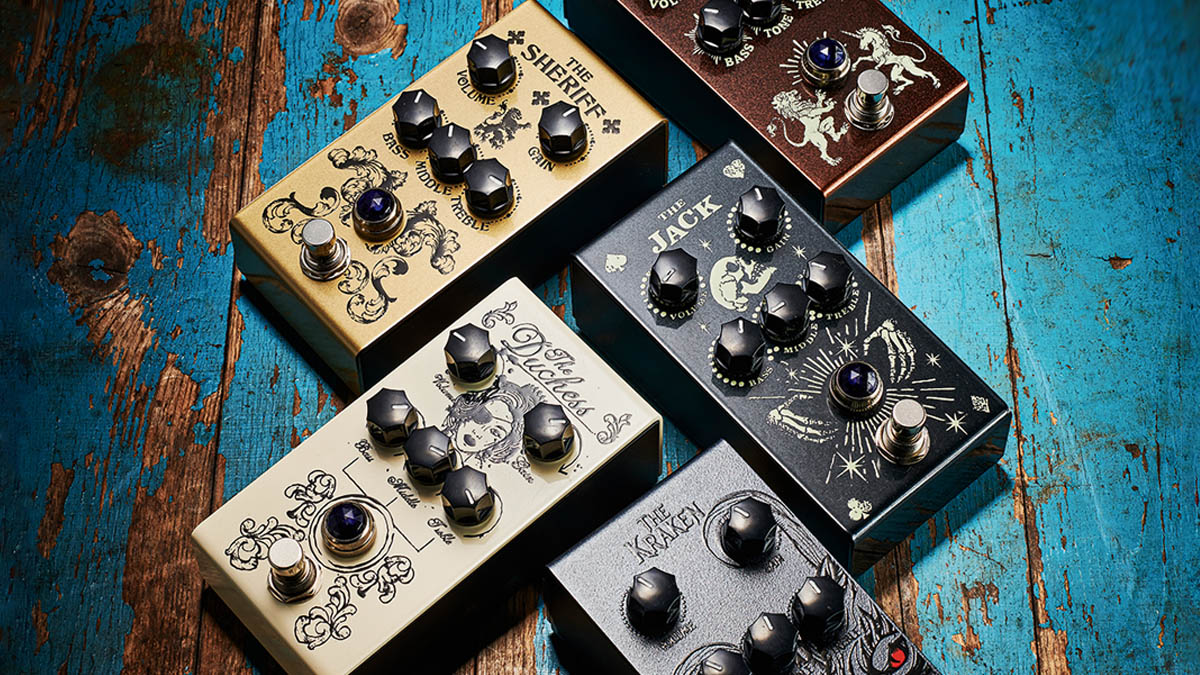Guitar World Verdict
Our personal favourite is The Copper, but all five have their own distinct characters, which in itself is an impressive achievement and means there should be a V1 to suit all tastes. In a practically infinite ocean of boutique overdrives, Victory’s new V1 range could well make a significant splash.
Pros
- +
Good-looking design.
- +
Unique artwork to match the full-size amps.
- +
They capture the original amp design’s character.
- +
Made in UK.
- +
Design collaboration with pedal guru Adrian Thorpe.
Cons
- -
Not the cheapest of overdrive pedals.
You can trust Guitar World
Victory has enjoyed considerable success in recent years with its compact V4 preamp and guitar amplifier ranges, the latter loaded with features including a 180-watt Class D power stage, built-in Two Notes cabinet emulation, digital reverb and balanced outputs.
While the V4 format defines what many of us want from a modern guitar amplifier, there are legions of guitarists who get their sounds purely from pedals and don’t need amplifiers to do anything more than just make them louder. That’s where the new V1 range comes in: five analog solid-state pedals that distil the essential tones of Victory’s award-winning amplification range into compact one-button, DC-powered stompboxes.
The result of a collaboration between Victory founder Martin Kidd and pedal guru Adrian Thorpe from ThorpyFX, all five V1 pedals share the same robust steel clamshell enclosure, with the bottom half painted black and the top half decorated with colour-coordinated graphics to match their corresponding amplifier family: copper (of course) for The Copper, cream for The Duchess, graphite for The Jack, silver grey for The Kraken, and gold for The Sheriff. Small rubber feet cover the four machine screws that secure the chassis top and bottom halves.
Apart from The Copper, the V1s share identical controls, featuring five knobs – Volume, Gain, Bass, Middle and Treble. The Copper’s mid control is replaced with a knob called Tone, which acts as a master tone control, similar to that found on Victory’s other Copper amps.
Each pedal has a single footswitch and blue jewel ‘on’ LED, with rear-facing signal and power connections to make the best use of your pedalboard’s real estate.
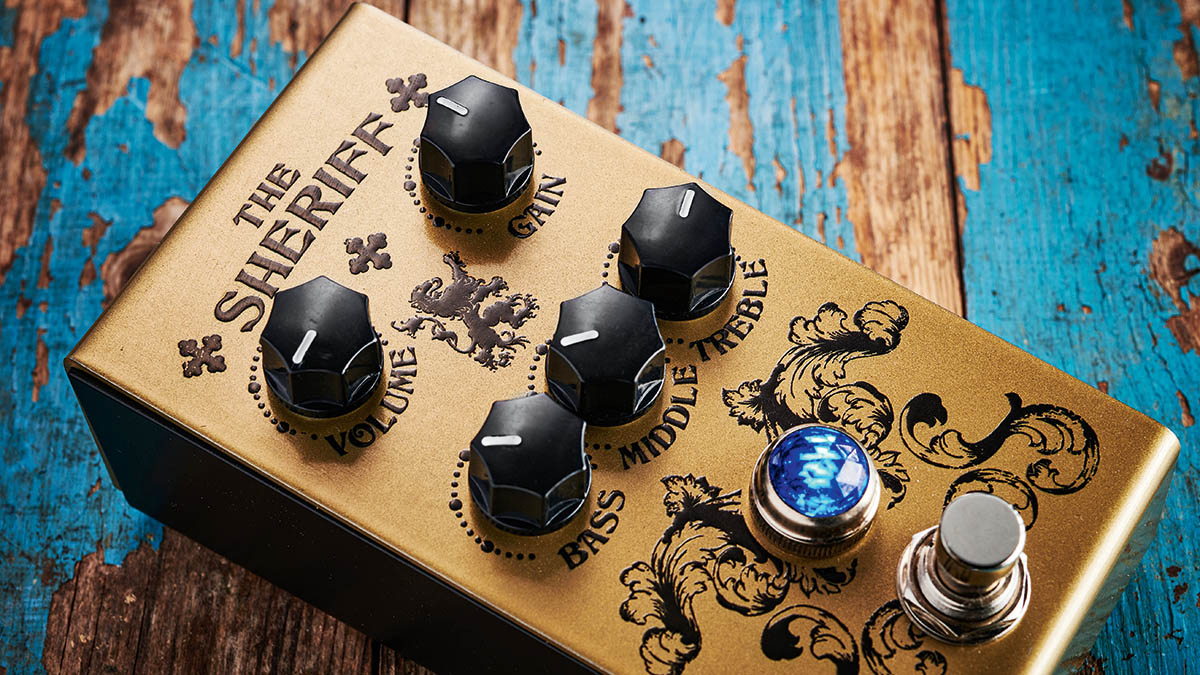
The V1’s electronics are mounted to the top half of the chassis, with a main PCB linked by minimal wiring to smaller boards for the switch and jack sockets.
As you’d expect from Victory, the component standard is high, with through-hole metal film resistors and quality capacitors alongside surface-mount FETs and op-amps. The resistors are close tolerance metal film types, which helps to keep the noise floor as low as possible.
Overall, the V1 stompboxes are typical of Victory’s high build quality; not only will they look smart on any pedalboard, they’re built to last and handle any gig with ease, from occasional pub nights to full-on professional touring.
Feel & Sounds
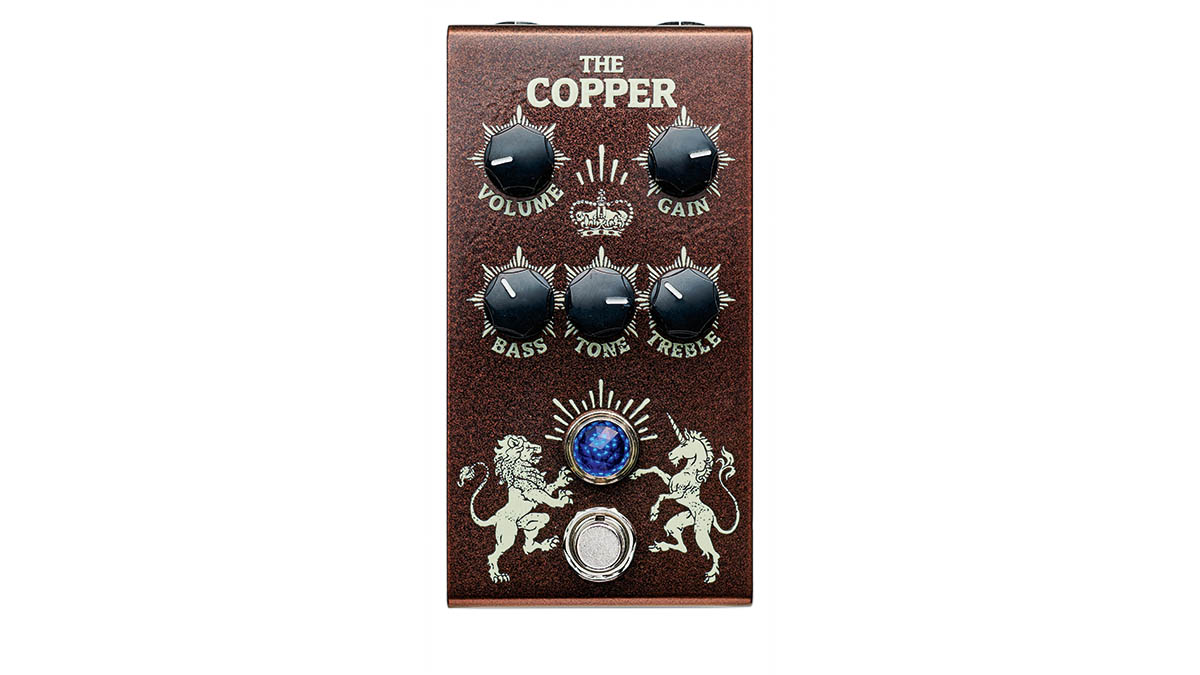
We tried out Victory’s V1 pedals with our regular Duncan Alnico Pro-equipped Strat and a Les Paul loaded with a pair of old PAF humbuckers, with each pedal used one at a time into the low-gain input of a 1x12 tube combo, EQ’d for a flat tone response.
The Copper V1 takes its inspiration from the EL84-powered combo, which was the sonic foundation for many legendary British acts in the 1960s and 70s. Like Victory’s other Copper amps it has a complex harmonic structure, producing a satisfying chime at lower gain settings, then shifting to a rich, medium-gain overdrive pedal that’s great for classic rock and blues.
Though there’s not quite enough gain for some of the bigger, fully saturated Brian May sounds, The Copper satisfyingly nails many other signature tones, from The Beatles to Bryan Adams and Rory Gallagher. This pedal is very touch-sensitive and cleans up nicely if you back off the guitar volume or vary your picking attack.
The midrange control is replaced with a knob called Tone, which acts as a master tone control, progressively rolling off highs as you turn it up, in a cool tip of the hat to the reverse tone control found on early AC30s.
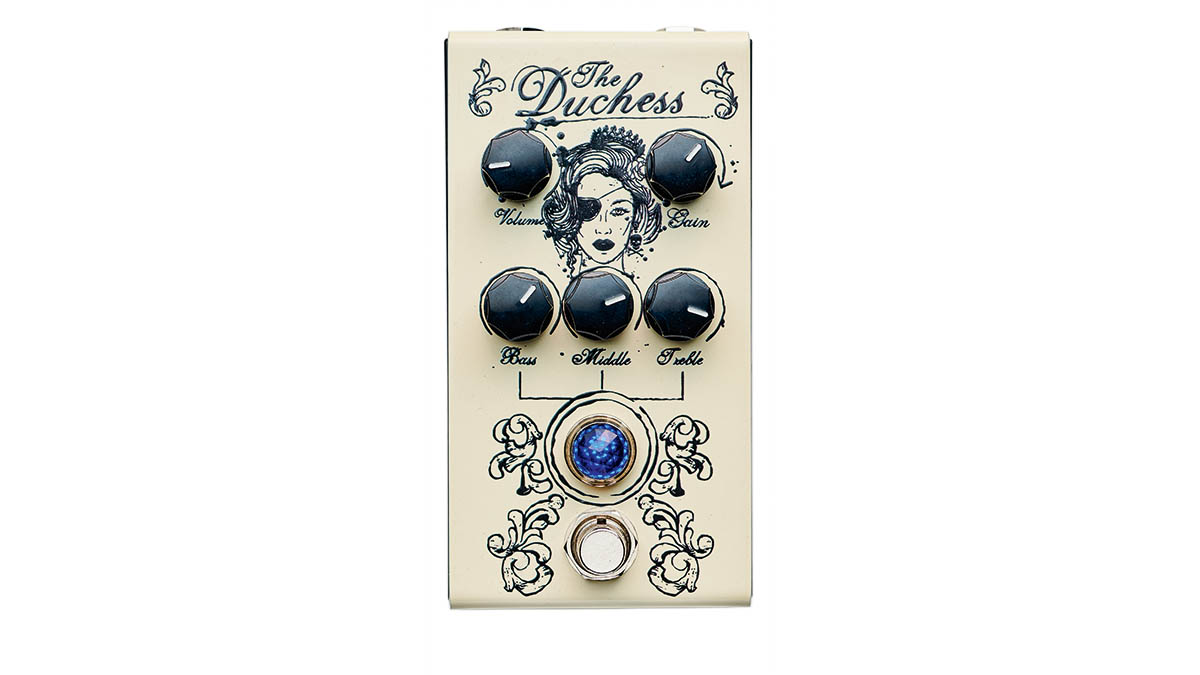
Next, The Duchess V1 is designed to emulate the V40 Duchess but with an extra dose of gain. Starting at lower settings, we found the glassy treble and smooth bass often associated with 60s-era Fenders, adding extra depth and bite to our Strat’s single coils without muddying the sound. Turn up the gain and things get wilder, with black panel-inspired sustain and crunch that’s great for blues soloing.
The Jack V1 is based on one of Victory’s most popular amps, V30 The Jack, which was designed in collaboration with legendary shredder Guthrie Govan. The Jack V1’s huge gain range goes from fat medium-gain crunch to soaring sustain with a turbo-charged tweed sparkle that sounds great with single coils but really good with a beefy humbucker.
The tone controls on this pedal are powerful, particularly the Middle knob, which can be used to dial in a satisfying ‘scoop’ for those big 80s hair metal sounds, all without pulling out too much treble or bass – similar to the ‘V’ shape setting you might use on a graphic EQ.
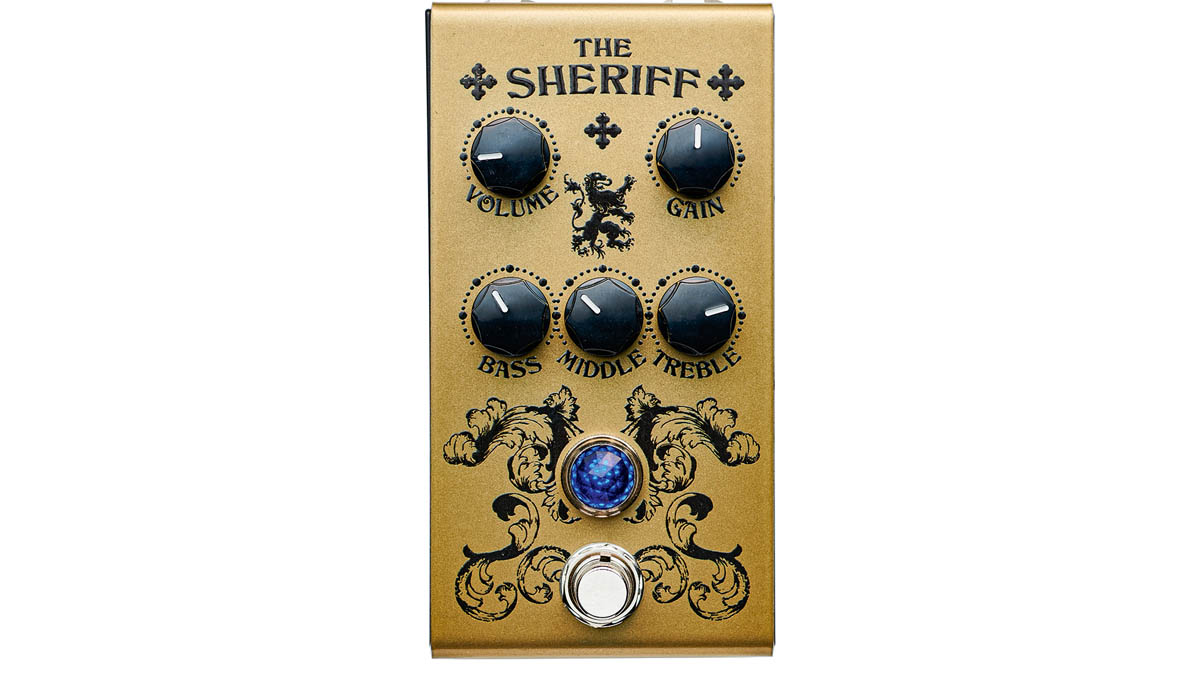
With a more British-influenced voicing, The Sheriff V1 produces a broad palette of vintage rock and blues at lower gain settings, while turning up the gain on this one is perfect for emulating Slash, Van Halen and many other rock icons.
It’s surprisingly complex, with smoothly interacting tone controls and a particularly satisfying midrange, carefully sculpted to capture those classic Brit-rock tones.
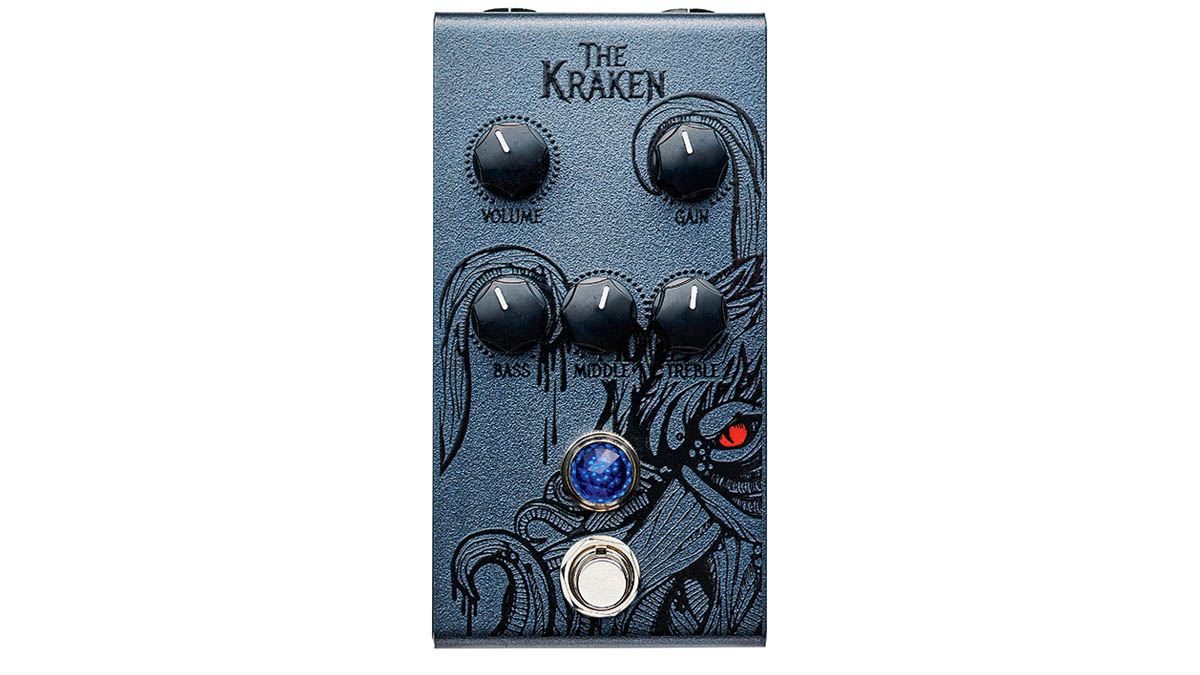
Finally, The Kraken V1 is all about gain, gain and more gain, transforming from the British-flavoured sounds on Channel 1 of Victory’s VX, to the extreme American-influenced sounds found on Channel 2. Like the Jack V1, The Kraken V1’s midrange is very powerful and needs to be carefully dialled in for the best results.
All five pedals benefit from impressively low background noise, which means they’ll sound great into desks as well as amplifiers, and you can significantly increase your sonic arsenal by using more than one without any appreciable signal degradation.
We had the best results using The Duchess, Sheriff and Copper V1s, which all blended nicely with the wah, delay and modulation pedals on our ’board. All five pedals are true bypass, and with sub-20mA current draw, they’ll sit happily on any pedalboard without the need for any special power supply considerations.
Verdict
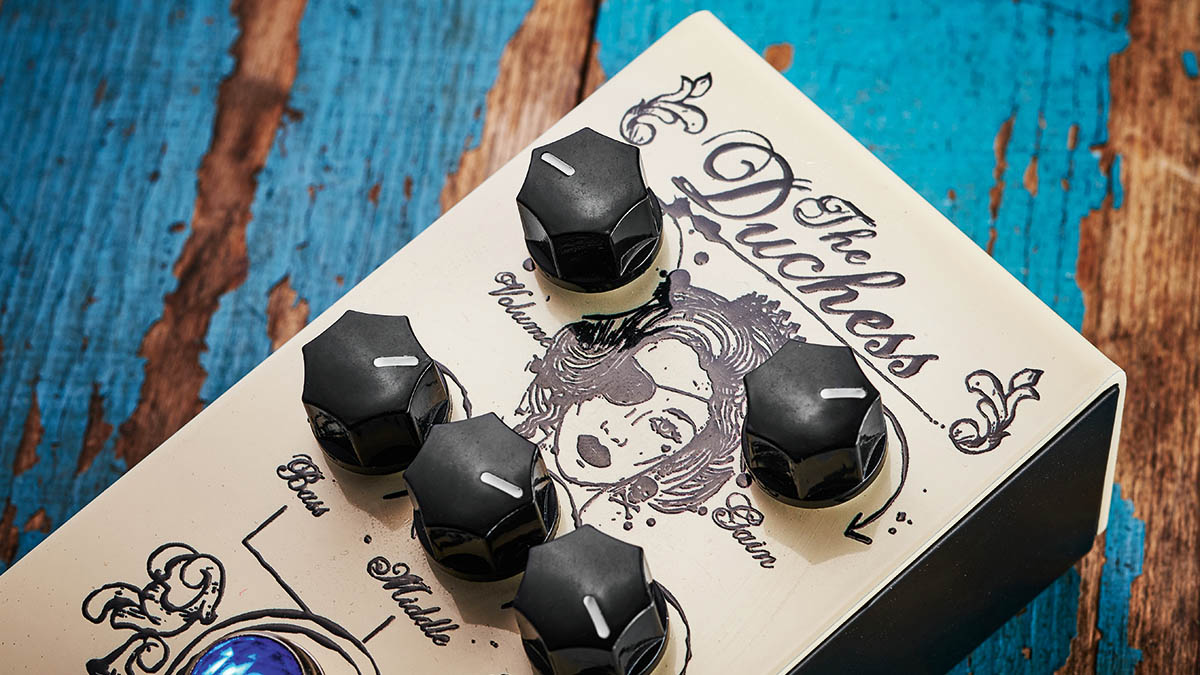
To take the core tones of Victory’s entire V4 amp range and translate them into solid-state stompbox format must have been a daunting task.
In the words of Adrian Thorpe, who collaborated with Victory on the V1 designs: “We were keen to make the V1 pedals sound as close to the full-bore tube amps as possible, but working with Martin and the team meant that we had to be even more precise to do their amp designs justice in solid-state pedal form. It took a long time, and many times we had to go back to the drawing board.”
As you might expect from pedals made in the UK with the Victory pedigree, the V1s aren’t the cheapest overdrives out there, but they stand up well compared with other boutique products and look great on the ’board.
Specs
- PRICE: $249/£199 each
- ORIGIN: UK
- TYPE: Solid-state, analog overdrive pedals
- DIMENSIONS: 125 (l) x 43 (d) x 66mm (w)
- WEIGHT (kg/lb): 0.47/1
- CHASSIS: Steel
- CONNECTIONS: Input & Output: ¼” mono jack socket, Power: standard 2.1mm centre pin negative DC socket
- POWER: 9VDC from external PSU (not supplied), 15-17mA current draw depending on model. No battery option
- CHANNELS: 1, with true bypass when off
- CONTROLS: V1 The Copper: Volume, Gain, Bass, Tone and Treble; The Duchess, Jack, Kraken & Sheriff: Volume, Gain, Bass, Middle and Treble
- FOOTSWITCH: Single button switches effect on/off
- ADDITIONAL FEATURES: None
- OPTIONS: None
- CONTACT: Victory Amps
Nick Guppy was Guitarist magazine's amp guru for over 20 years. He built his first valve amplifier at the age of 12 and bought, sold and restored many more, with a particular interest in Vox, Selmer, Orange and tweed-era Fenders, alongside Riveras and Mark Series Boogies. When wielding a guitar instead of soldering iron, he enjoyed a diverse musical career playing all over the UK, including occasional stints with theatre groups, orchestras and big bands as well as power trios and tributes. He passed away suddenly in April 2024, leaving a legacy of amplifier wisdom behind him.
